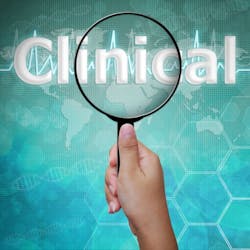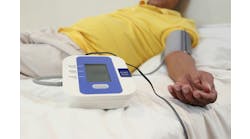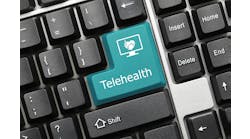A recent survey of 30 U.S. clinical informatics executives suggests that a new generation of clinical surveillance tools for high-acuity patients has the potential to cut down on alarm fatigue experienced with traditional clinical decision support tools in the EHR. But the market for such tools is in its infancy, and clinical leaders are still evaluating the best approach to integrate the analytics with existing tools and work flows.
Spyglass Consulting Group recently released a market report based on the surveys, outlining some of the opportunities and challenges for hospitals and health systems considering clinical surveillance and data analytics solutions as a means for improving clinical and business outcomes for conditions such as sepsis.
I recently interviewed Gregg Malkary, Spyglass’ managing director, about the overlap between traditional clinical decision support (CDS) and clinical surveillance, and whether there is some confusion about what distinguishes them.
“Perhaps what we are seeing in the EHR are more basic clinical decision support tools, and the realm of clinical surveillance is actually more advanced,” he said. Clinical surveillance can be seen as an advanced form of CDS focused on specific deteriorating conditions. “Every condition, such as sepsis, has its own algorithm, and there are certain protocols that are industry-defined or hospital-defined on how to treat it,” he said. “These algorithms must always be running in the background and be tied to specific work flows.”
Many organizations are leveraging their EHR data as their first step into clinical surveillance, he adds, but some people who work in intensive care say that is not good enough because that data is stale by the time they get it. “Patient data such as demographics and labs is valuable, but they need to correlate that with real-time streaming data around temperature, heart rate, oxygenation levels, blood pressure, ventilators and pumps,” Malkary said. “Those real-time capabilities can enhance patient safety and improve care quality. This aligns directly with the key performance indicators of the organization, especially as it relates to the Triple Aim.”
One hospital informatics executive told Malkary that clinical alarms and notifications often lack appropriate context, which requires a nurse to manually access, aggregate and analyze retrospective data from the EHR, biomedical devices and other clinical information systems to identify deteriorating conditions. Early signs of patient deterioration may be subtle. It requires automation to monitor all the data and advanced algorithms to detect these subtle signs, the exec told him.
Looking at the available solutions in this space, Malkary put them in three buckets: tools from the EHR vendors such as Epic and Cerner; solutions provided by vendors of monitoring equipment; and smaller third-party vendors fine-tuning specific algorithms.
The tools from EHR vendors often require very significant customization and often require the hospital to rewrite the algorithm because the signal-to-noise ratio is so high, he said. “If the accuracy is only 50 percent, you have a problem,” he said. “Is this helping or hurting? Some hospitals implement it and then turn it off.”
Monitor vendors such as GE Healthcare and Philips have implemented their own finely tuned tools and algorithms. There is a higher level of confidence in what these vendors are doing, but the data set is limited, Malkary said.
Then there are third-party vendors, such as Bernoulli Health, PeraHealth and Excel Medical. “They tend to be smaller vendors and the solutions tend to be quite expensive,” Malkary said. “They are focused on a limited number of patient conditions and they have limited data integration with the EHR. And the algorithmic accuracy is a big question. There are some small vendors that have phenomenal quality in terms of data fidelity and algorithmic fidelity, but they are expensive. I interviewed several hospitals executives who identified that as a problem.
They are looking for early customers to publish results about the efficacy. One CMIO I interviewed said if you can prove that this works, I will find the money.”
So how will these platforms evolve? The EHRs have to be a starting point, Malkary said. Informatics execs are thinking about how to extend that by accessing other real-time data from disparate sources across the organization.
“All hospitals have their own protocols for specific conditions. They need to be able to customize algorithms for their own specific needs and be able to support a wide range of conditions,” he added. “Today the focus is on sepsis, but there are about 20 other core measures that could be quite relevant. How do you bring them all together under a single platform?”
The questions for informatics executives are which solutions to deploy and how to go about implementing them. “How do you integrate this into the work flows,” Malkary asked, when in many cases the workflows have not been digitized?”
"If they want a platform that can assess a wide array of conditions, leveraging disparate data located throughout the organization, I think these smaller vendors are showing promise in terms of vision and thought leadership,” Malkary said. “Will they be able to deliver 20 comprehensive algorithms? It is going to take them a while to get there. But hospitals need a platform that can support a wide range of patients throughout the health system.”


